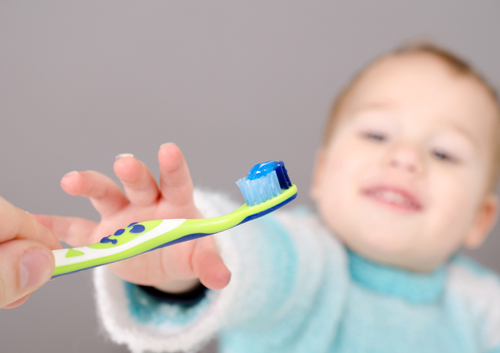
Never before have dental implants looked as natural and aesthetically pleasing as they do today. With the help of computer-aided design and computer aided manufacturing (CAD/CAM), Dr. Jenny A. Kanganis and our team are able to create implants with impeccable fit and finish. Although these technologies have been in use since the 1980s, it’s only recently that they became efficient and cost-effective enough to be useful.
Dr. Jenny A. Kanganis can also take digital scans of your teeth, providing a much more in-depth and accurate representation of them when compared to traditional X-rays. This scan can be used to create a physical model of your teeth through the use of 3D printing technology, allowing for the utmost in accuracy when planning your implant treatment.
Since each of our patients are unique, these CAD/CAM technologies offer a highly customized approach to implant dentistry that helps avoid the “one-size-fits-all” ways of the past. The goal is to have an implant look and function as closely as it can to the tooth it’s replacing. That’s why these implants are typically milled using ceramic or composite resin — materials chosen due to their durability and resemblance to teeth.
Even the planning of your surgery can be aided and guided by computers. 3D CT scans create a digital representation of your mouth including all significant anatomical markers. This data is imported into planning software which, coupled with CAD/CAM implant technology, is able to 3D print surgical guides that snap into place over a patient’s teeth. This means less risk for surgical error and much more accurately placed dental implants.
The main benefits of CAD/CAM dental implants are that they:
Of course this is just a quick summary of the benefits, and a computer-modeled implant may not always be the best option. If you have questions about the dental implants or the technologies we use to make them look as natural as possible, feel free to contact our Bronxville office.

You might think babies don’t need to brush their teeth, especially when they don’t have any. But by starting good habits like brushing when your child is young, you can lay the foundation for them to continue those good habits into adulthood.
When do I start?
The best time to start brushing your baby’s teeth is before he or she has any. Develop the habit of wiping your baby’s gums with a wet, soft washcloth or gauze every day. There is no need to use toothpaste, just wrap the gauze or cloth around your finger, moisten it with a little water, and gently rub it over the gums.
This helps your little one get used to brushing while it eliminates bacteria in the mouth that can harm emerging teeth. You don’t need to apply a lot of pressure or even take very long: just a quick, gentle rub over the gums will do it.
What do I use?
When your child’s teeth begin to come in, you will need to switch from a cloth to a baby toothbrush. Find one that has a grip big enough for your hand, but a head that is small enough to maneuver easily in your infant’s mouth.
You don’t need to use any toothpaste until your son or daughter is about a year old. Even then, though, you’ll want to use just a tiny amount: about the size of a grain of rice. When your toddler is about two years old, you can use a pea-sized amount.
By around six years of age, your child will probably rinse and spit without your help. At that point, you may want to introduce a child-friendly fluoride mouthwash.
How do I do it?
Your child probably won’t be able to brush his or her teeth alone until about the age of five or six. This means that you will need to do it. To brush your child’s teeth, gently use the brush over all the teeth and gums, even areas where the teeth have not come in yet.
As your child grows and becomes more independent, you can allow him or her to hold the toothbrush while you guide your child’s progress. Make sure you talk to your child while you are brushing, and explain why you brush: what you are doing and how you are doing it.
In addition to regular visits with Dr. Jenny A. Kanganis, instilling good oral health habits in your child early on will ensure a lifetime of good dental health.

Dr. Jenny A. Kanganis and our team know it is natural for you to feel some concern when you need to wear any type of dental device to correct a problem with your teeth. Both braces and Invisalign can produce good results in giving you the smile you’ve always wanted. Both methods can straighten your teeth and alleviate such issues as crowding, spacing, cross bite, overbite, and underbite. Both methods of treatment have a similar cost.
You can take a cross-country road trip in a ten-year-old economy car or you can make the trip in a brand-new luxury sedan. Both will get you to your destination, but you will be far more comfortable traveling in the luxury sedan. Similarly, your journey to a great smile is much more comfortable and convenient with Invisalign as opposed to braces.
Comfort
Some of the discomfort you may experience with braces is greatly reduced with Invisalign. Because Invisalign is custom-fit to your mouth and made of plastic, you will feel less pain, irritation, and soreness. Unlike braces, there are no food restrictions; you can eat anything that is on your diet.
Brushing and flossing
Of course you will want to brush and floss your teeth to prevent plaque buildup, tooth discoloration, and dental decay. If you wear braces, these simple tasks can become quite a challenge. Invisalign aligners are very easy to remove and replace, so you can brush or floss like normal without having to work your way around any metallic framework covering your teeth.
Appearance
You do not have to be embarrassed to show your teeth when you are using the Invisalign system. Since the aligners are practically invisible, no one will even notice you are wearing them! Whether you are a teenager or an older adult, you can live your life normally.
If you want to learn more about Invisalign, or are wondering what your treatment options are at Bronxville Dental Care, feel free to give us a call at our convenient Bronxville office!

Heading for the beach! Hiking to the lake! Keeping cool with a tall, frosty glass of ice water in a foreign bistro, or taking a refreshing gulp from the fountain in the park! Hot weather has arrived, and water is something we’re more conscious of now than most other times of the year. Even so, water as a dental feature? Glad you asked!
Whether you want to bask in the heat or escape it, heading out for a day in or on the water works. And while you’re protecting your skin with sunscreen, think about protecting your teeth and mouth as well. With one small slip, any physical water sport—water skiing, water polo, surfing—can result in damage to your teeth or jaw. Bring—and use—the mouthguard you wear for sports like basketball or biking, and make sure you have a summer of smiles ahead of you.
Summer has a beverage menu all its own. Iced coffee and iced tea, a cooler full of sodas, fresh lemonade, fruity cocktails—so many refreshing ways to beat the heat! And we would never suggest that you turn down every frosty summer temptation. But do be mindful that dark beverages like tea, coffee, and sodas can stain teeth, sugary and acidic ones are damaging to your enamel, and alcoholic drinks can be dehydrating. Water, on the other hand, is always a healthy choice. It’s helpful for keeping your mouth and teeth clean, it often contains the fluoride that helps fight cavities, it’s hydrating—and, it has no calories! Be sure to make water a significant part of your summer beverage menu, and your body will thank you for it.
Water’s importance to our bodies can’t be overstated! From major organs to individual cells, we need water. And one major benefit of proper hydration is healthy saliva production. Why is that important? Saliva plays a vital role in preventing cavities. It washes away the food particles that oral bacteria feed on, reducing their ability to produce the acids that lead to enamel erosion and cavities. Saliva even helps neutralize acids already in the mouth. Finally, saliva contains important calcium, phosphate and fluoride ions which actually help restore enamel strength after it has been exposed to oral acidity.
Summer goes by all too quickly. Protect your teeth during these warm, active months with a mouthguard. And whether you spend your free time outdoors, or visiting people and places, or keeping cool at home, be mindful of dental-friendly beverage options and always stay hydrated. You’ll be ready to greet fall with a beautiful smile and healthy teeth. “Water Features”? Perhaps a better title would be “Water Power”!